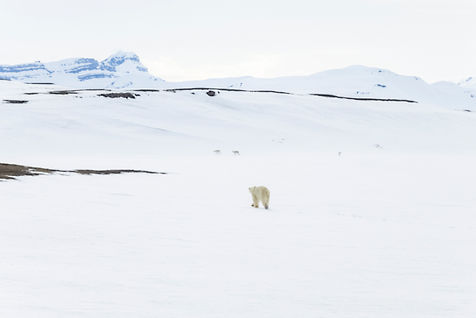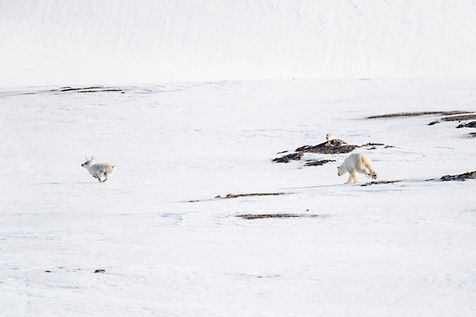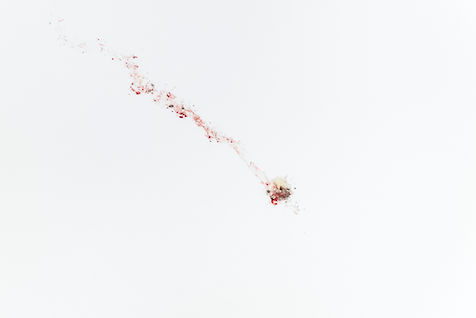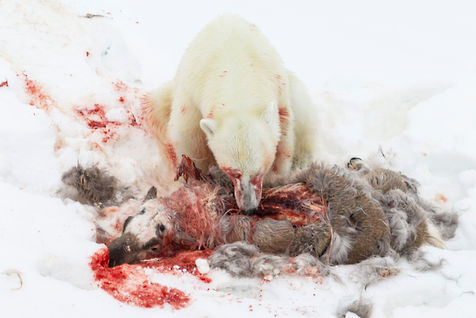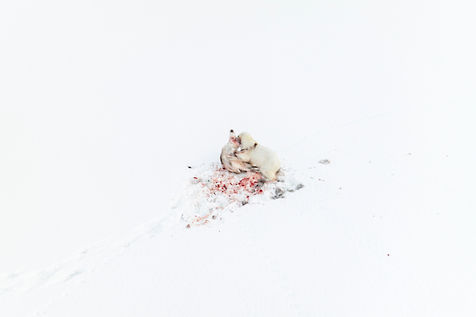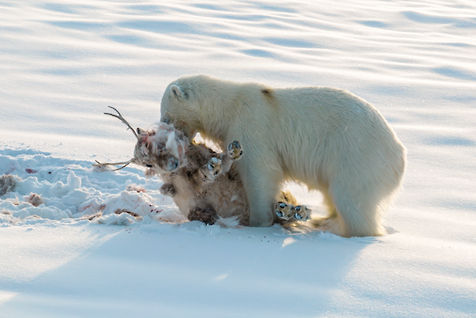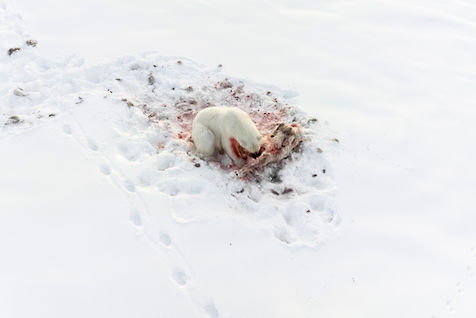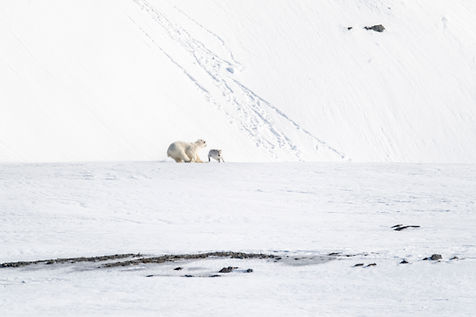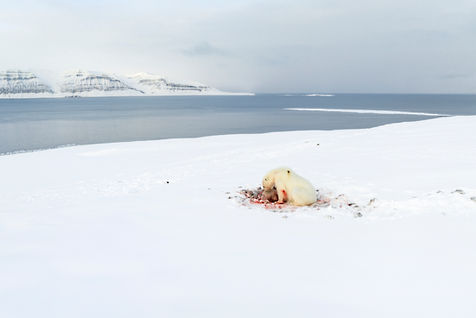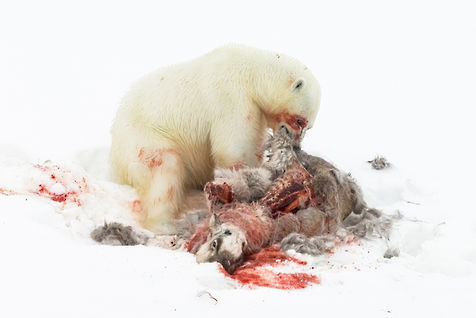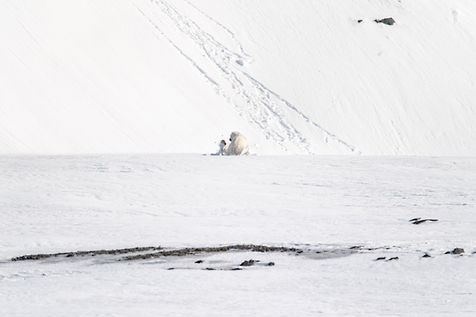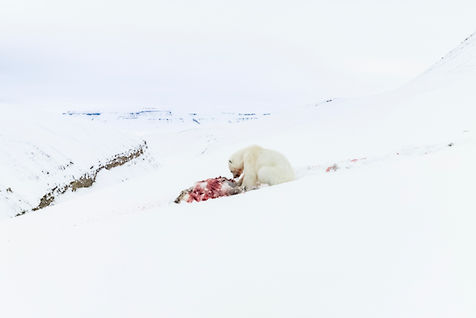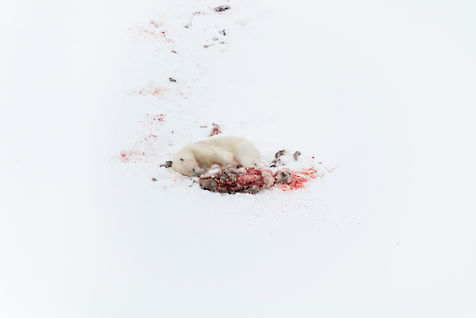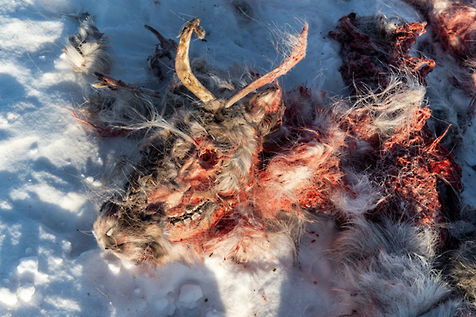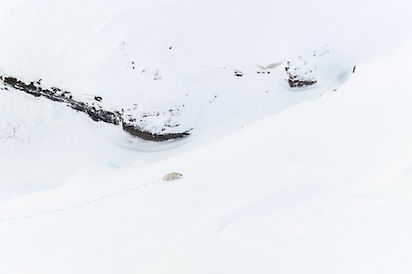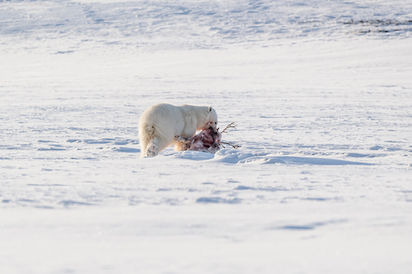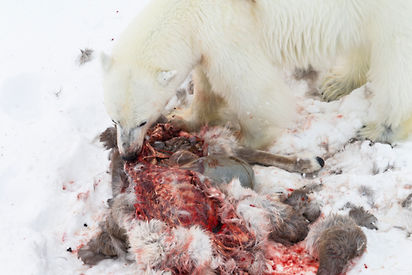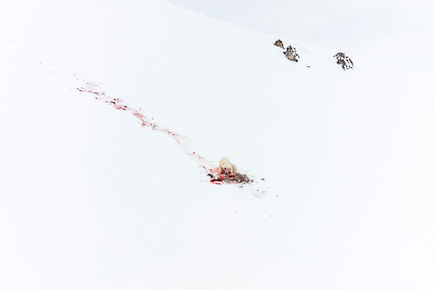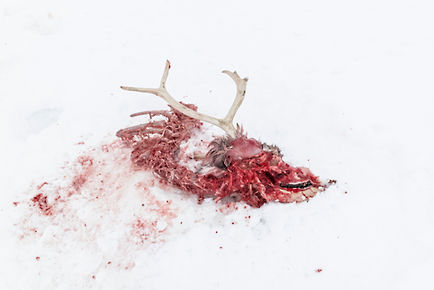top of page
REINDEER-HUNTING POLAR BEARS
The untold & unique story of bears who have specialized
Over the past two years, my friend Oskar, an expedition leader, and I have documented a fascinating phenomenon: the evolution of hunting behaviour among the polar bears of Svalbard. This behaviour, passed down from mother to cub, appears to be intensifying. Contrary to old beliefs that portrayed them as incapable of running long distances, polar bears have demonstrated remarkable hunting skills, defying human expectations. We observed that these bears are capable of killing up to two reindeer per day, recording over 55 successful hunting sites.
Each observation revealed diverse and complex strategies employed by the bears to capture their prey, and we compiled ten pages of notes that have enriched scientific research. These bears, opportunistic by nature, show impressive physical condition, enabling them to reach speeds of up to 8 m/s and maintain a chase for an average of 1 minute and 30 seconds. The longest chase we recorded lasted nearly 4 minutes and covered a distance of more than one kilometre.
This behaviour highlights the resilience of nature, even in an environment as vulnerable as Svalbard, where climate change is felt more intensely than anywhere else on Earth. Winter sea ice has decreased by 50% over the past three decades, but despite these changes, the polar bear population remains relatively stable. However, scientists warn that ongoing ecosystem changes may pose long-term challenges for these animals. In areas affected by human hunting, polar bear populations are not always as stable. This study raises a crucial question: will polar bears disappear if sea ice continues to decline?

bottom of page

